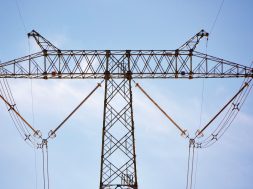
Renewable energy share in total generation mix to cross 10% in FY20, to add 10 GW to generation capacity.
India’s renewable energy (wind and solar) sector’s contribution to the overall power generation mix is expected to cross 10% in FY20 as the country will add 10 giga-watt (GW) generation capacity during the period. In the preceding three years, the share of renewable in total generation mix has risen to 7.8% as of March 2018 from 5.6% in FY15 owing to large capacity additions witnessed in the wind and solar power segments. India plans to have 40% of installed power generation capacity on clean sources by 2030.
The calendar year 2018 also saw over 10 GW of project awards by the central nodal agencies and state distribution utilities, which provide a healthy visibility for renewable capacity addition in calendar year 2019 and FY20.
To meet India’s 175-GW renewable energy target by 2022, the ministry of new and renewable energy plans to tender 60 GW of solar and 20 GW of wind capacity by March 2020, leaving a two-year window to complete the projects within the target period. As per estimates, 9 GW and 20 GW of renewable capacity would be added in FY19 and FY20, respectively.

Experts believe the year 2018 was a landmark year for domestic solar equipment manufacturers, who received support from the government’s imposition of the safeguard duty. Sunil Rathi, director, sales and marketing at Waaree Energies, said the safeguard duty created a level playing field for manufacturers to showcase their capabilities, and bring in disruptive research and development.
The company observed an increase in exports, which will further the growth of solar manufacturing in India. “With disruptive techniques that put us on a par with our international counterparts, we believe floating solar, energy storage, and flexible modules will prove to be important tools in taking solar energy to the next level in 2019,” Rathi said. However, there are a few who believe regulatory uncertainties, such as safeguard duties, are negative for industry and can impede the growth.
Andrew Hines, co-founder and business development head of CleanMax Solar, believes the safeguard duty created a lot of uncertainty in the industry for around seven-eight months. The year 2019 might see the peak growth of previous five years, provided there are no regulatory surprises similar to safeguard duty. However, certain segments like commercial and industrial, and open access, will continue to perform well despite challenges. “Even government tenders will see good growth as there has been improvement in wind and solar tariffs compared with conventional thermal power tariffs,” Hines said. Apart from safeguard duty, the sector, however, remains exposed to near-term challenges arising from rising interest rates and transmission network availability. The average bid tariffs discovered in the auctions for wind and solar power projects in 2018 have so far remained at Rs 2.6-2.7 per unit. “Notwithstanding these cost pressures, wind and solar PV energy projects are likely to remain cost competitive against conventional power sources,” research agency ICRA said in a report. Irregular payments from state discoms is seen to remain a challenge for wind and solar power projects. Projects awarded by central nodal agencies and discoms in states such as Gujarat are, however, relatively insulated from this impediment. ICRA noted that, thanks to the UDAY scheme, the payment discipline of Rajasthan and Maharashtra have shown signs of improvement.












